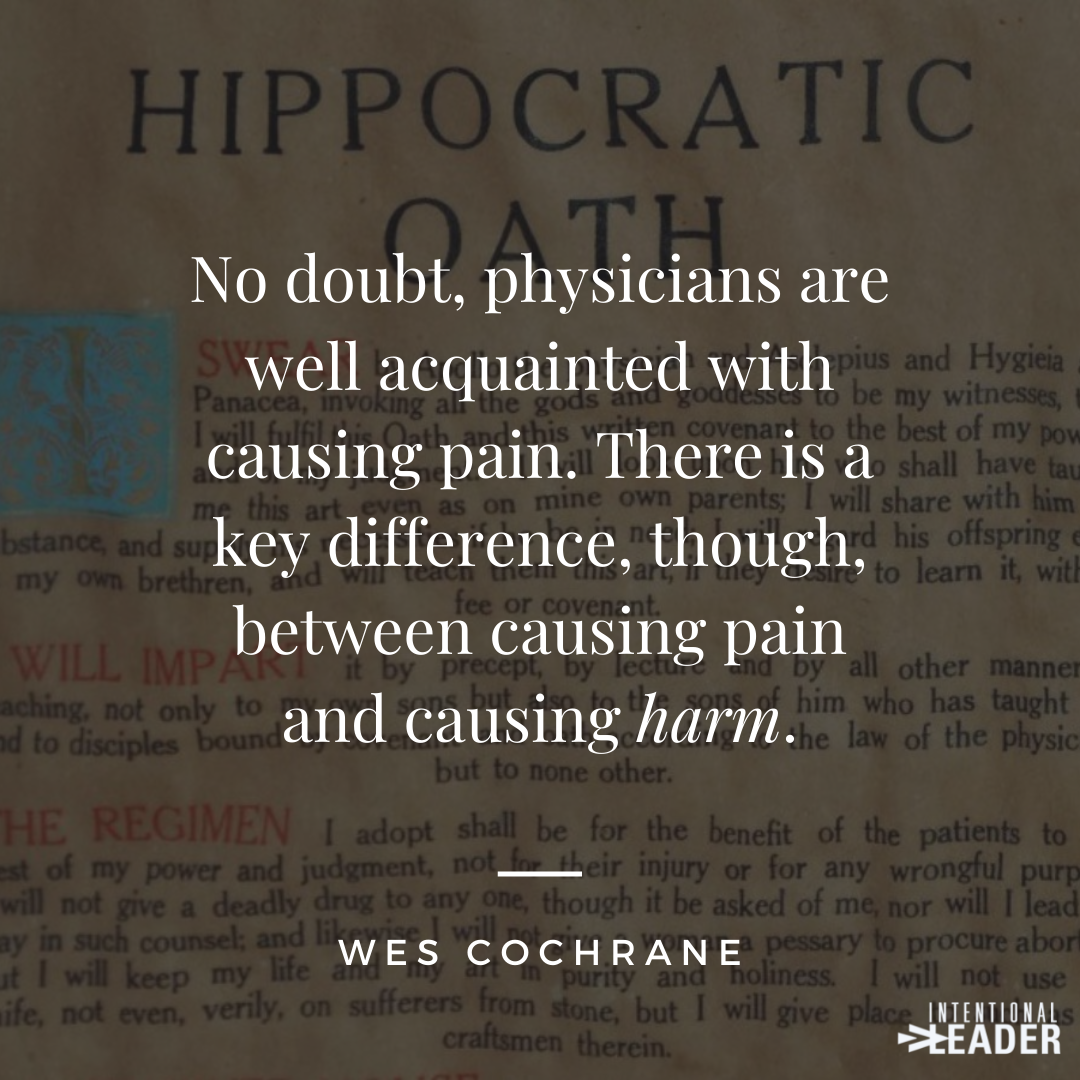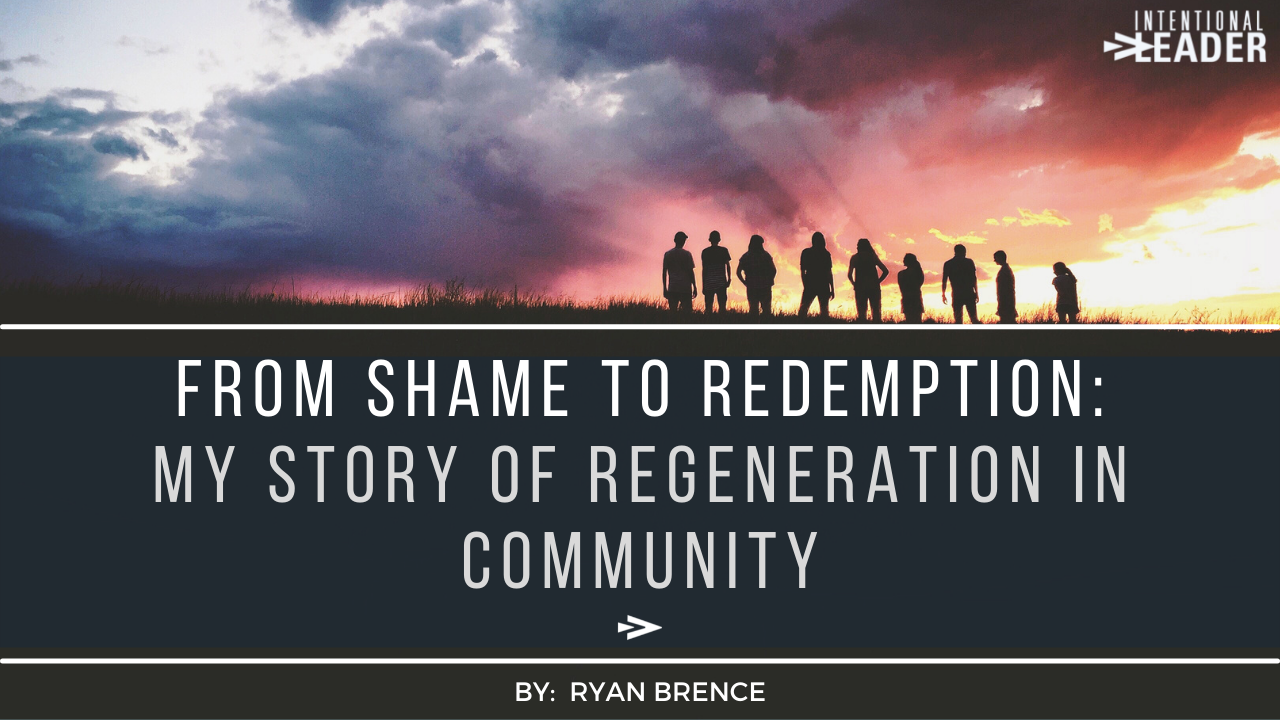The “Miracle Drug” for Leaders
By: Wes Cochrane
America has a unique relationship with diet and exercise. The conversation surrounding health and fitness in America typically is skewed to aesthetics. How do I get the washboard abs I’ve always wanted? How do I lose my love handles? How do I get more toned?
We count calories. We count points. We count macros. We count reps. We count sets.
We track our body weight. We track our body fat percentage. We track the inches.
We go run to fit in our jeans again. We diet before beach trips and social events. We exercise just enough to eat or drink whatever we want when we go out.
We embrace intermittent fasting. We research keto. We “go paleo.” We become vegan.
We cut gluten. We cut dairy. We cut carbs. We cut FOOD! (just kidding).
For many of us, it’s “mirror, mirror, on the wall…” day in, and day out.
And, there’s nothing inherently wrong with wanting to steal a glance at the mirror and see a Greek god or goddess staring back.
But, all of this misses a wonderful and fascinating reality about the benefits of exercise – especially for leaders.
Exercise doesn’t just strengthen our bodies. It’s an elixir for the mind and spirit; unrivaled by any man-made drug in its benefit and lack of negative side-effects. And leaders should pay careful attention to this because the return on investment is virtually immeasurable.
Let’s look at the science.
The brain is a complex organ; not a muscle. But, like a muscle, it can grow. Exercise promotes something called neuroplasticity – the brain’s ability to form new neural connections and pathways (i.e., circuitry in the brain). In other words, exercise promotes learning. Even more amazing is the 2007 revelation from a Columbia University study that regular exercise promotes neurogenesis. Where neuroplasticity prompts increased neural connections in the brain, neurogenesis literally is the growth of new neurons.
The 2007 Columbia study was groundbreaking.
Researchers found that regular exercise directly targets a portion of the hippocampus – an area of the brain responsible for consolidating short and long term memory – known as the dentate gyrus, “which underlies normal age-related memory decline that begins around age 30” for the average adult.
How did the Columbia researchers conclude this?
First, they observed that study participants that exercised regularly performed better on memory tests. More intriguing, however, were their findings via MRI imaging, which showed actual growth of neurons within the living brain – specifically within the dentate gyrus area of the hippocampus.
Getting a little more granular, researchers have identified what is underneath all of this brain growth. It’s a protein called brain-derived neurotrophic factor or BDNF. In short, when we exercise, our bodies produce BDNF, which floods the hippocampus and the prefrontal cortex (more on that in a moment), stimulating the brain’s ability to learn and establish other connections .
Professor of psychiatry at Harvard Medical School and author of the book, Spark: The Revolutionary New Science of Exercise and the Brain, Dr. John Ratey, has famously called BDNF “miracle grow for the brain.”
What’s more is that the release of BDNF in the brain doesn’t merely promote neurogenesis, it acts as a shield and defense to brain decline. A study published in 2015 found that exercise improves memory and may help prevent Altzheimers disease by acting as a shield against neurodegenerative conditions.
Exercise doesn’t merely trigger better memory through improvements in neuron growth and connectivity, it also directly impacts the prefrontal cortex – the area of the brain responsible for the “executive functions” of the mind. By executive functions, I mean planning, decision making, organization, consequence evaluation, learning from mistakes, maintaining focus, and working memory. For leaders, these functions should ring a bell.
How does exercise do this?
Many studies have suggested that the prefrontal cortex has greater volume in people who exercise versus people who don’t. Findings show that even regular exercise, of a moderate intensity, over the course of just six months, is associated with increases in the volume of the prefrontal cortex.
In fact, a 2012 study found that even a single bout of aerobic exercise influenced neural pathways that directly led to better post-exercise cognitive functioning.
If there ever were a “miracle drug” available to us, it’s exercise.
I’ll share one more study – an older one – that has resonated with me ever since I read about it in Dr. Ratey’s book, Spark. I’m talking about a famous 1999 Duke University study comparing the effects of exercise with the drug Zoloft.
The Duke study took over 100 older patients suffering from depression and divided them into three groups: (1) a group that took the drug Zoloft for 16 weeks; (2) a group that exercised 30 minutes a day, four times per week, for 16 weeks; and (3) a group that took Zoloft and did the exercise. Remarkably, at the end of the study, all three groups experienced roughly the same average drops in levels of depression.
Commenting on the study, one lead researcher noted, "One of the conclusions we can draw from this is that exercise may be just as effective as medication and may be a better alternative for certain patients.”
One other quote is worth drawing out simply because of the fun of hindsight. Again, commenting back in 1999, that same lead researcher added, “While we don't know why exercise confers such a benefit, this study shows that exercise should be considered as a credible form of treatment for these patients.”
Fast forward. We actually know why now. And it’s not a mystery or pure speculation. It’s reliable, peer-reviewed science that directly establishes the fact that exercise has a physical impact on our brains.
As leaders – folks whose primary role is communication, strategic thinking, prioritizing, team building, stewarding, vision casting, counseling, writing, decision-making, resolving conflict, etc. – we can’t afford to miss the benefit that’s staring us in the face.
And listen, I’m not urging anyone to eat their proverbial vegetables here.
Looking at the Duke study, the results came with – get this – a brisk walk.
No one is suggesting that you take up crossfit or start competing in sprint triathlons and tough mudders.
The advantages can come from a brisk 30 minute walk, several times a week. What a beautiful way to begin tapping into the deep well of the benefits that flow from routine exercise.
I could go on and on about the benefits of exercise. Since I read Dr. Ratey’s book back in 2013, the internet has proliferated with study upon study confirming and expanding on the basic conclusions I’ve drawn our attention to in this article.
In summary, if you’re a leader or aspiring leader reading this, my hope for you – especially those who are working so hard and feeling the strain of the demands at home and at the office – is that you will reevaluate the possibility of fitting something as basic as a 30-minute walk into your day, three times a week.
As we often reflect on (and sometimes lament), at Intentional Leader, the list of things we can control in this life is fairly short. Happily, exercise is on that list, and its benefits are vast.
Choose to prioritize this activity that will likely have an unimaginable return on investment for you in your life and work, an investment far more significant than your waistline or the size of your biceps.
One last thing…If you’re interested in growing in your leadership practice and being inspired to think differently and unlock greater personal potential, we want to give you a gift. Just click the link below and tell us where to send you 12 Ideas That Will Make You A Better Leader In 2022.
































































